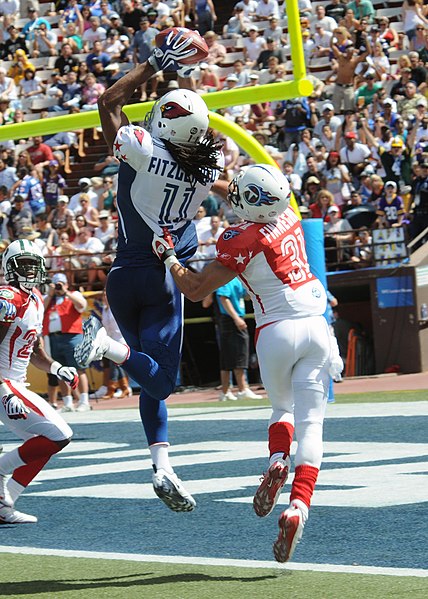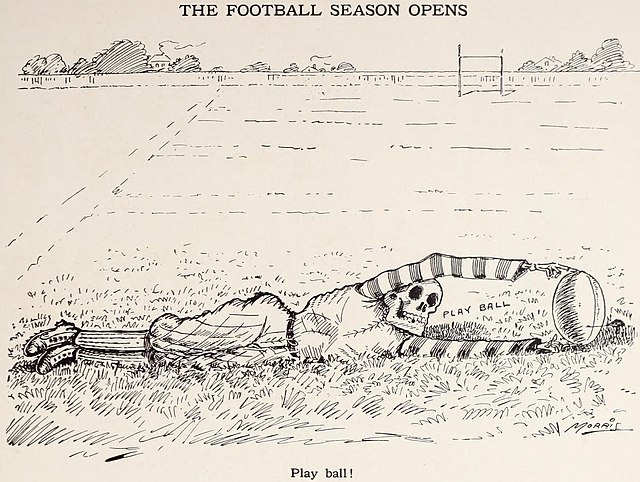A fair catch is a feature of American football and several other codes of football, in which a player attempting to catch a ball kicked by the opposing team – either on a kickoff or punt – is entitled to catch the ball without interference from any member of the kicking team. A player, usually a return specialist, wishing to make a fair catch signals his intent by extending one arm above his head and waving it while the kicked ball is in flight. A ball caught in this manner becomes dead once caught, i.e., the player catching the ball is not entitled to advance the ball, and the receiving team begins its drive at the spot where the ball was caught.
A fair catch of a punt in American football
American football, also known as gridiron football, is a team sport played by two teams of eleven players on a rectangular field with goalposts at each end. The offense, the team with possession of the oval-shaped football, attempts to advance down the field by running with the ball or throwing it, while the defense, the team without possession of the ball, aims to stop the offense's advance and to take control of the ball for themselves. The offense must advance at least ten yards in four downs or plays; if they fail, they turn over the football to the defense, but if they succeed, they are given a new set of four downs to continue the drive. A game is won by the team with the higher number of points, which are scored primarily by advancing the ball into the opposing team's end zone for a touchdown or kicking the ball through the opponent's goalposts for a field goal.
Larry Fitzgerald (in blue) catches a pass while Cortland Finnegan (in red) plays defense at the 2009 Pro Bowl.
Walter Camp, the "Father of American Football", in 1878 when Camp was captain of Yale University's football team
The dangers associated with the sport depicted in a 1908 cartoon by William Charles Morris
Pudge Heffelfinger, widely regarded as the first professional football player





